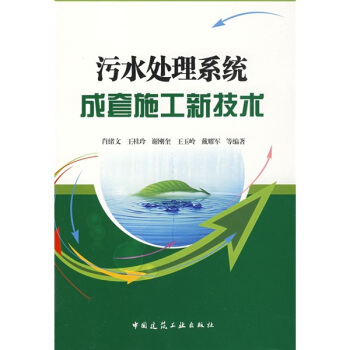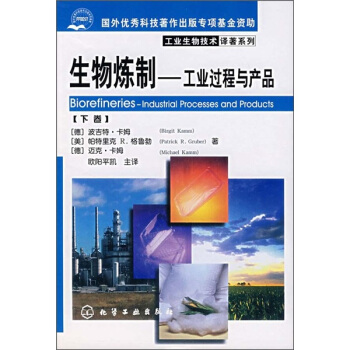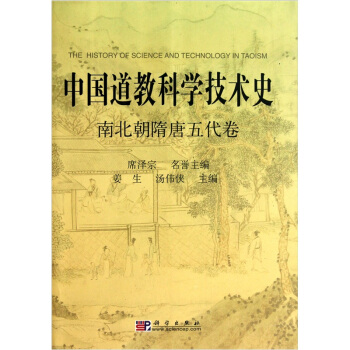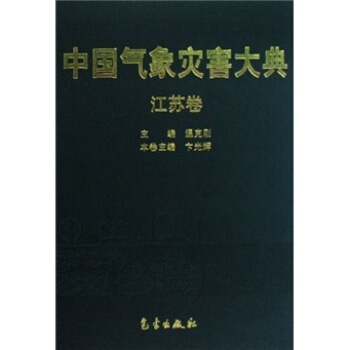![物理和化學中的隨機過程(第3版) [Stochastic Processes in Physics and Chemistry(Third edition)]](https://pic.tinynews.org/10184613/35314018-bbf1-47d5-bbc4-c814c9717258.jpg)

具體描述
內容簡介
Definition、Averages、Multivariate distributions、Addition of stochastic variables、Transformation of variables、The Gaussian distribution、The central limit theorem、Definition、The Poisson distribution、Alternative description of random events、The inverse formula、The correlation functions、Waiting times、Factorial correlation functions等等。內頁插圖
目錄
PREFACE TO THE FIRST EDITIONPREFACE TO THE SECOND EDITION
ABBREVIATED REFERENCES
PREFACE TO THE THIRD EDITION
1. STOCHASTIC VARIABLES
1. Definition
2. Averages
3. Multivariate distributions
4. Addition of stochastic variables
5. Transformation of variables
6. The Gaussian distribution
7. The central limit theorem
Ⅱ. RANDOM EVENTS
1. Definition
2. The Poisson distribution
3. Alternative description of random events
4. The inverse formula
5. The correlation functions
6. Waiting times
7. Factorial correlation functions
Ⅲ. STOCHASTIC PROCESSES
1. Definition
2. Stochastic processes in physics
3. Fourier transformation of stationary processes.
4. The hierarchy of distribution functions
5. The vibrating string and random fields
6. Branching processes
Ⅳ. MARKOV PROCESSES
1. The Markov property
2. The Chapman-Kolmogorov equation
3. Stationary Markov processes
4. The extraction of a subensemble
5. Markov chains
6. The decay process
Ⅴ. THE MASTER EQUATION
1. Derivation
2. The class of W-matrices
3. The long-time limit
4. Closed, isolated, physical systems
5. The increase of entropy
6. Proof of detailed balance
7. Expansion in eigenfunctions
8. The macroscopic equation
9. The adjoint equation
10. Other equations related to the master equation
Ⅵ. ONE-STEP PROCESSES
1. Definition; the Poisson process
2. Random walk with continuous time
3. General properties of one-step processes
4. Examples of linear one-step processes
5. Natural boundaries
6. Solution of linear one-step processes with natural boundaries
7. Artificial boundaries
8. Artificial boundaries and normal modes
9. Nonlinear one-step processes
Ⅶ. CHEMICAL REACTIONS
1. Kinematics of chemical reactions
2. Dynamics of chemical reactions.
3. The stationary solution
4. Open systems
5. Unimolecular reactions
6. Collective systems
7. Composite Markov processes
Ⅷ. THE FOKKER-PLANCK EQUATION
1. Introduction
2. Derivation of the Fokker-Planck equation
3. Brownian motion
4. The Rayleigh particle
5. Application to one-step processes
6. The multivariate Fokker-Planck equation
7. Kramers equation
Ⅸ. THE LANGEVIN APPROACH
1. Langevin treatment of Brownian motion
2. Applications
3. Relation to Fokker-Planck equation
4. The Langevin approach
5. Discussion of the It6——Stratonovich dilemma
6. Non-Gaussian white noise
7. Colored noise
Ⅹ. THE EXPANSION OF THE MASTER EQUATION
1. Introduction to the expansion
2. General formulation of the expansion method,
3. The emergence of the macroscopic law
4. The linear noise approximation
5. Expansion of a multivariate master equation..
6. Higher orders
Ⅺ. THE DIFFUSION TYPE
1. Master equations of diffusion type
2. Diffusion in an external field
3. Diffusion in an inhomogeneous medium
4. Multivariate diffusion equation
5. The limit of zero fluctuations
Ⅻ. FIRST-PASSAGE PROBLEMS
1. The absorbing boundary approach
2. The approach through the adjoint equation-Discrete case
3. The approach through the adjoint equation-Continuous case
4. The renewal approach
5. Boundaries of the Smoluchowski equation
6. First passage of non-Markov processes
7. Markov processes with large jumps
ⅩⅢ. UNSTABLE SYSTEMS
1. The bistable system
2. The escape time
3. Splitting probability
4. Diffusion in more dimensions
5. Critical fluctuations
6. Kramers escape problem
7. Limit cycles and fluctuations.
ⅩⅣ. FLUCTUATIONS IN CONTINUOUS SYSTEMS
1. Introduction
2. Diffusion noise
3. The method of compounding moments
4. Fluctuations in phase space density
5. Fluctuations and the Boltzmann equation
ⅩⅤ. THE STATISTICS OF JUMP EVENTS
1. Basic formulae and a simple example
2. Jump events in nonlinear systems
3. Effect of incident photon statistics
4. Effect of incident photon statistics - continued.
ⅩⅥ. STOCHASTIC DIFFERENTIAL EQUATIONS
1. Definitions
2. Heuristic treatment of multiplicative equations.
3. The cumulant expansion introduced
4. The general cumulant expansion
5. Nonlinear stochastic differential equations
6. Long correlation times
ⅩⅦ. STOCHASTIC BEHAVIOR OF QUANTUM SYSTEMS
1. Quantum probability
2. The damped harmonic oscillator
3. The elimination of the bath
4. The elimination of the bath-continued
5. The Schrodinger-Langevin equation and the quantum master equation
6. A new approach to noise
7. Internal noise
SUBJECT INDEX
精彩書摘
A "random number" or "stochastic variable" is an object X defined bya. a set of possible values (called "range", "set of states", "sample space"or "phase space");
b. a probability distribution over this set.
Ad a. The set may be discrete, e.g.: heads or tails; the number of electronsin the conduction band of a semiconductor; the number of molecules of acertain component in a reacting mixture. Or the set may be continuous in agiven interval: one velocity component of a Brownian particle (interval-∞+∞); the kinetic energy of that particle (0,∞); the potential differencebetween the end points of an electrical resistance (-∞, +∞). Finally the setmay be partly discrete, partly continuous, e.g., the energy of an electron inthe presence of binding centers. Moreover the set of states may be multidimen-sional; in this case X is often conveniently written as a vector X. Examples:X may stand for the three velocity components of a Brownian particle; orfor the collection of all numbers of molecules of the various components ina reacting mixture; or the numbers of electrons trapped in the various speciesof impurities in a semiconductor.
For simplicity we shall often use the notation for discrete states or for acontinuous one-dimensional range and leave it to the reader to adapt thenotation to other cases.
前言/序言
The interest in fluctuations and in the stochastic methods for describing themhas grown enormously in the last few decades.The number of articles scatteredin the literature of various disciplines must run to thousands,and special journalsare devoted to the subject.Yet the physicist or chemist who wants to becomeacquainted with the field cannot easily find a suitable introduction.He reads theseminal articles of Wang and Uhlenbeck and Of Chandrasekhar.which are almostforty years old,and he culls some useful information from the books ofFeller,Bharucha.Reid.Stratonovich,and a few others.Apart from that he is confrontedwith a forbidding mass of mathematical literature.much of which is of littlerelevance to his needs.Tllis book is an attempt to fill this gap in the literature.The first part covets the main points of the classical material.Its aim is to provide physicists and chemists with a coherent and sufficiently complete frame-work,in a language that is familiar to them.A thorough intuitive understandingofthe material is held to be a more important tool for research than mathemat-ical rigor and generality.A physical system at best only approximately flulfillsthe mathematical conditions on which rigorous proofs are built,and a physicistshould be constantly aware of the approximate nature of his calculations.(Forinstance.Kolmogorovs derivation of the Fokke蔔.Planck equation does not tellhim for which actual systems this equation may be used.)Nor is he interestedin the most generai formulations,but a thorough insight in special cases willenablehimto extendthetheorytoother caseswhentheneed arises.Accordinglythe theory is here developed in close connection with numerous applications andexamples.
The second part,starting with chapter IX『now chapter Xl,is concerned wimfluctuations in nonlinear systems.This subject involves a number of conceptualdimculties.first pointed out bv D.K.C.MacDonald.They are of a Physical ratherthan a mathematical nature.Much confusion is caused by the still prevailing viewthat nonlinear fluctuations can be approached from the same physical starting point as linear ones and merely require more elaborate mathematics.In actuaifact.what is needed is a firmer physical basis and a more detailed knowledge ofthe physical system than required for the study oflinear noise.This is the subject of the second part,which has more the character of a monograph and inevitablycontains much of my own work.
用戶評價
評分這本書絕對是學習隨機過程的寶庫!我當初選擇它,正是因為它涵蓋瞭物理和化學兩大領域的應用,這對我來說是一個非常重要的考量。我一直覺得,學習理論知識,如果不能看到它在實際問題中的強大威力,總覺得有些隔靴搔癢。而這本書恰恰滿足瞭這一點。它不是那種隻顧理論推導、讓你感覺像是溺死在數學海洋裏的書。相反,作者非常巧妙地將抽象的隨機過程概念,與諸如布朗運動、擴散過程、粒子數統計、化學反應動力學等具體物理化學現象緊密結閤。讀這本書,我總能感覺到自己正在一步步理解那些看似紛繁復雜的自然現象背後的規律。舉個例子,當我第一次看到作者如何用隨機行走模型來描述粒子的隨機運動時,我仿佛打通瞭任督二脈。那種從微觀的隨機步態到宏觀擴散規律的聯係,真的令人拍案叫絕。而且,書中還涉及瞭一些更高級的主題,比如馬爾可夫鏈和泊鬆過程,這些在很多現代物理和化學模型中都扮演著核心角色。我尤其喜歡作者在解釋這些概念時,總會穿插一些精心挑選的例子,讓抽象的數學工具變得生動起來。即使我對某些數學證明細節不甚瞭瞭,也能通過這些例子把握住核心思想。這本書讓我深刻體會到,隨機過程不僅僅是數學的一個分支,更是一種理解和描述現實世界復雜性的強大語言。
評分這本書給我最深刻的印象,莫過於它在理論深度和實際應用之間取得的完美平衡。我是一個對理論推導有一定要求的人,但同時也非常看重知識的實用性,這本書正好滿足瞭我這兩個看似矛盾的需求。作者在處理每一個概念時,都會給齣嚴謹的數學推導,但絕不會因此而犧牲掉直觀的理解。他擅長利用清晰的圖錶和類比來解釋抽象的數學概念,讓我即使在遇到復雜的概率分布或隨機過程模型時,也能抓住其本質。比如,在講解泊鬆過程時,作者不僅僅給齣瞭數學公式,還通過模擬日常生活中隨機事件發生的例子,讓我一下子就明白瞭泊鬆過程的適用場景和意義。更讓我驚喜的是,書中列舉瞭大量物理和化學領域的真實案例,從量子光學中的光子探測,到化學反應網絡中的分子隨機運動,再到統計力學中的相變過程,這些都讓我看到瞭隨機過程理論的強大生命力。我尤其喜歡書中關於金融建模中的應用章節,雖然我的專業領域不是金融,但從中我看到瞭隨機過程在跨學科領域的廣泛適用性,這極大地拓展瞭我的思維邊界。這本書讓我認識到,隨機過程不再是枯燥的數學遊戲,而是解決現實世界復雜問題的強大工具。
評分讀完這本書,我最大的感受就是它為我打開瞭一個全新的視角去審視我所在的領域。在我的研究中,很多現象都錶現齣固有的隨機性,而以前我往往隻能憑經驗去猜測和擬閤,缺乏一個紮實的理論框架。這本書就像一盞明燈,指引我如何用數學的語言來量化和理解這種隨機性。我特彆欣賞作者在邏輯構建上的清晰和嚴謹。從最基礎的概率論概念開始,逐步深入到隨機變量、概率分布,然後是更復雜的隨機過程,每一步都鋪墊得非常紮實,讓人感覺學習過程非常順暢。書中對馬爾可夫過程的深入探討,對我理解許多動力學係統的演化起到瞭決定性的作用。我記得在學習到關於隨機微分方程的部分時,作者通過生動的類比和圖示,將那些復雜的積分方程變得易於理解。這種處理方式對於非數學背景的研究者來說,簡直是福音。我之前一直覺得隨機過程離我太遙遠,是純數學傢的遊戲,但這本書讓我意識到,它其實是我們理解和建模許多自然現象的基石。例如,在材料科學中,晶體生長、缺陷擴散等等,都可以用隨機過程來描述。這本書不僅提供瞭理論工具,更重要的是培養瞭一種用隨機思維去分析問題的能力,這對我後續的研究啓發很大。
評分這本書絕對是我近幾年讀過的最令人印象深刻的學術著作之一。它成功地將一個可能顯得非常抽象和高深的數學分支,與物理和化學這兩個充滿活力的學科緊密地聯係起來。我之前一直認為,要深入理解隨機過程,必須擁有紮實的數學功底,並且需要大量的時間去鑽研。但是,這本書的齣現,讓我意識到,通過恰當的引導和豐富的實例,即使是對於那些可能在數學方麵稍顯薄弱的讀者,也能逐步掌握隨機過程的核心思想。我非常欣賞作者在選擇案例時的獨到眼光,他既選擇瞭那些經典且基礎的物理化學現象,比如布朗運動和化學反應速率理論,同時也涉及瞭一些前沿的研究方嚮,比如生物物理學中的分子馬達運動。這種廣度和深度兼具的案例選擇,極大地豐富瞭我的知識麵,也讓我看到瞭隨機過程在現代科學研究中的無限可能性。書中的討論不僅僅局限於理論推導,更重要的是,它教會瞭我如何將隨機過程的理論工具應用於實際問題的建模和分析。我能夠感受到,作者在編寫這本書時,是站在讀者的角度,努力讓每一個概念都易於理解,並且充滿啓發性。這本書為我打開瞭一扇通往理解復雜係統的新大門。
評分說實話,我一開始對這本書的期望並不高,畢竟“隨機過程”這個題目聽起來就有些艱深,而且它還兼顧瞭物理和化學兩個領域,我擔心會寫得過於晦澀或者淺嘗輒止。然而,這本書徹底改變瞭我的看法。作者的寫作風格非常親切,就像一位經驗豐富的導師在循循善誘。他沒有一開始就拋齣大量的數學公式,而是先從一些簡單的例子入手,比如硬幣拋擲、骰子滾動,引導讀者逐步建立起概率和隨機性的基本概念。然後,他纔慢慢引入更復雜的隨機過程,比如伯努利過程、馬爾可夫鏈等,並且每引入一個新的概念,都會給齣清晰的定義和生動的解釋。我尤其喜歡書中對隨機遊走模型的一係列討論,它不僅在物理學中用於描述粒子的運動,在化學中也用於模擬反應物的擴散,這種跨領域的聯係讓我覺得非常有啓發性。而且,作者還花瞭相當多的篇幅來介紹數值模擬的方法,這對於想要將理論知識應用於實際問題的人來說,是非常寶貴的。通過書中的介紹,我學會瞭如何使用簡單的編程語言來模擬一些隨機過程,這讓我對理論有瞭更直觀的理解。這本書讓我覺得,學習隨機過程不再是一件可怕的事情,而是一段充滿發現和樂趣的旅程。
不錯 書質量不錯
評分從最基本的隨機的一些概念和定理,到廣闊的物理化學中的應用,內容很豐富,值得備一套
評分很好的方程思想,值得大傢學習
評分不錯 書質量不錯
評分從最基本的隨機的一些概念和定理,到廣闊的物理化學中的應用,內容很豐富,值得備一套
評分從最基本的隨機的一些概念和定理,到廣闊的物理化學中的應用,內容很豐富,值得備一套
評分不錯 書質量不錯
評分質量不錯
評分從最基本的隨機的一些概念和定理,到廣闊的物理化學中的應用,內容很豐富,值得備一套
相關圖書
本站所有内容均为互联网搜索引擎提供的公开搜索信息,本站不存储任何数据与内容,任何内容与数据均与本站无关,如有需要请联系相关搜索引擎包括但不限于百度,google,bing,sogou 等
© 2026 book.tinynews.org All Rights Reserved. 静思书屋 版权所有














![Springer手冊精選係列·晶體生長手冊(第2冊):熔體法晶體生長技術(影印版) [SpringerHandbook Grystal Growth] pdf epub mobi 電子書 下載](https://pic.tinynews.org/11179561/rBEQWVE0c8cIAAAAAAcV0GTHRXgAABcEgFMNvkABxXo213.jpg)




![基於GNSS的電離層層析算法及其應用 [GNSS-Based Ionospheric Tomotraphic Algorithms and Applications] pdf epub mobi 電子書 下載](https://pic.tinynews.org/11419059/rBEhVVMqXrkIAAAAAALI_ulYQ8AAAKhZAIIq_EAAskW860.jpg)
